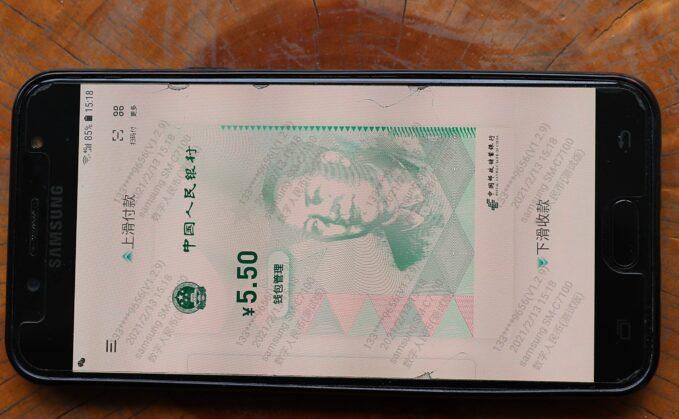Africa-Press – Mauritius. There’s growing unease in Washington that last month’s launch of a new Chinese digital yuan threatens the dollar’s preeminence as the world’s reserve currency.
Questions about the new cryptocurrency have come up repeatedly in recent weeks during Congressional testimony, particularly regarding places like Africa, where US anxieties about China already run quite high.
China’s cryptocurrency Americans are right to be worried about China’s ambitions to deploy its own blockchain-enabled cryptocurrency but probably for very different reasons than those circulating within the DC discourse.
Take the Huawei Mate 40, which is now available in several major African markets and is the first smartphone that comes preinstalled with a digital yuan wallet.
At this point, it’s not really that big of a deal since: the phone is super expensive so not a lot of people can actually afford it; there’s no practical use in exchanging yuan with most people in Africa.
It’s almost certain the Mate 40 will not have much of an impact, but the inclusion of a built-in secure wallet for digital yuan, however, is potentially a very important leading indicator.
While Huawei is undeniably a fading brand in the handset market due to crippling US sanctions, other Chinese device makers like Transsion, Oppo, and Xiaomi dominate the African smartphone sector.
So, if Transsion, in particular, decided to follow Huawei’s lead and incorporate the same kind of digital wallet in its devices, it could be a game-changer because of its enormous scale.
Let’s be clear here, though, Transsion users in Africa wouldn’t use that new wallet to conduct transactions in yuan, they’d use their own currencies. But in doing so they’d be adopting Chinese cryptocurrency standards in one of the world’s fastest-growing mobile money markets.
In terms of who would actually use digital yuan, other than a few traders who’d like to reduce currency conversion fees for Chinese transactions, there probably won’t be wide uptake soon.
The key obstacle here is the fact that the yuan is still not a convertible currency. There’s no benefit for a consumer to transact in RMB, compared to a more established foreign currency like the dollar or the euro, which is much easier to move around.
But that may not be an issue for the Chinese because this really isn’t about the now or even the near term. The new digital yuan may be more about laying the groundwork for something that’s coming five to fifteen years down the road. Imagine the following scenario that happens sometime in the year, say, 2029: a Kenyan tea trader wants to sell to a buyer in Tajikstan.
The two will use a Huawei-powered network to discuss the transaction, the payment will be done via a secure Chinese cryptocurrency and held in a Chinese escrow account, the tea will be shipped on the Chinese-built Standard Gauge Railway to a COSCO ship waiting at the Port of Mombasa, the shipment will then be tracked by BeiDou (the Chinese GPS system) and when it arrives, the payment will be settled in yuan or converted to shillings.
That entire transaction will be facilitated by the Belt and Road, using Chinese technology, standards, and infrastructure that all operate outside of the existing US/European-built system, and with China at the centre of it all.
Bottom line So, this isn’t about just a currency, because at present the digital yuan doesn’t make a lot of sense as a standalone product in a place like Africa.
Instead, the new digital currency is just a small part of a much larger ecosystem that is now taking shape. That’s what they need to be focusing on in Washington.
For More News And Analysis About Mauritius Follow Africa-Press







